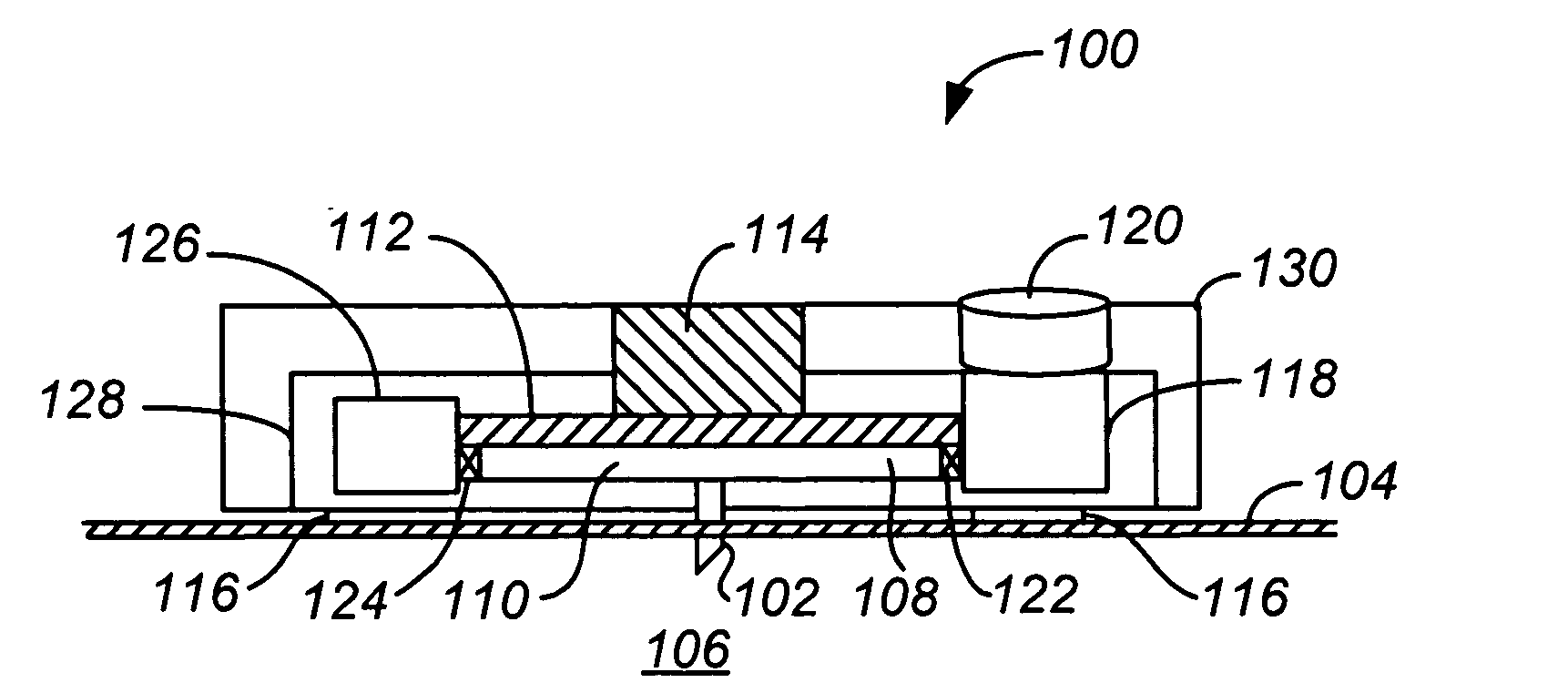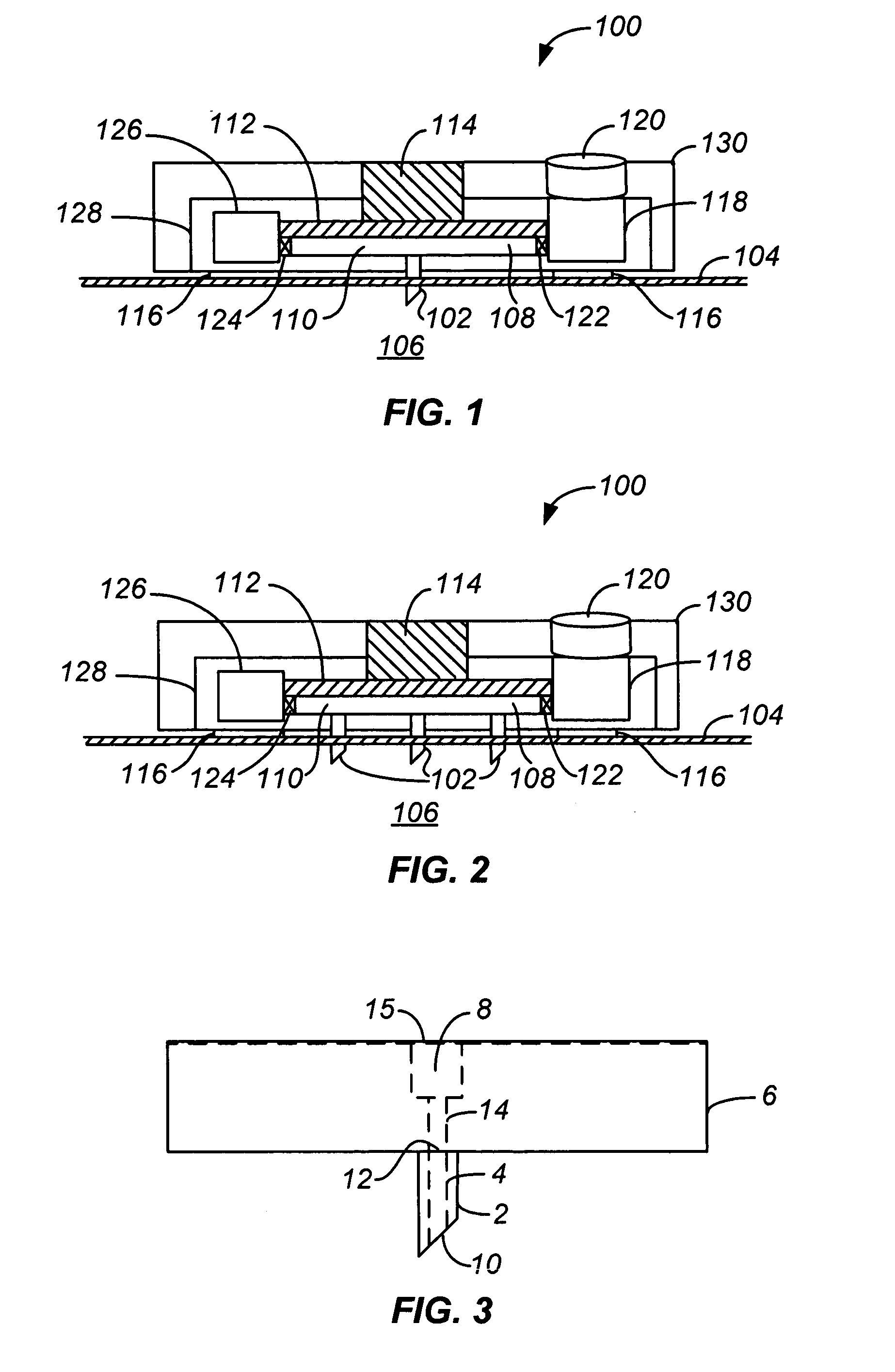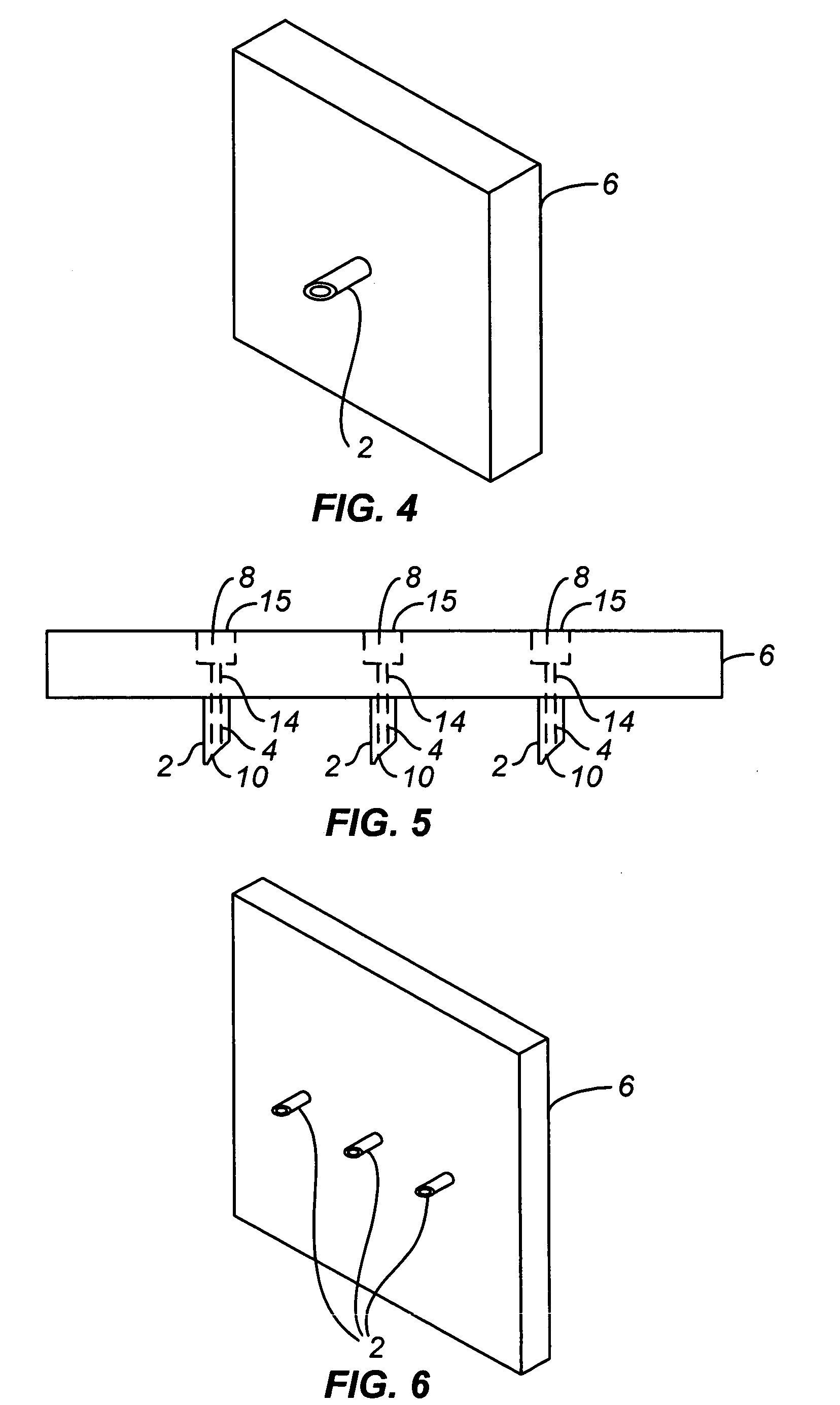Device, systems, methods and tools for continuous glucose monitoring
a technology of continuous glucose monitoring and devices, applied in the field of systems, devices, methods and tools, can solve the problems of blood glucose levels below 80 mg/dl, life-threatening disease, and inability to respond properly
- Summary
- Abstract
- Description
- Claims
- Application Information
AI Technical Summary
Problems solved by technology
Method used
Image
Examples
Embodiment Construction
[0046]The present invention provides a significant advance in biosensor and glucose monitoring technology: portable, painless, virtually non-invasive, self-calibrating, integrated and non-implanted sensors which continuously indicate the user's blood glucose concentration, enabling swift corrective action to be taken by the patient. The invention may also be used in critical care situations, such an in an intensive care unit to assist health care personnel. The sensor and monitor of this invention may be used to measure any other analyte as well, for example, electrolytes such as sodium or potassium ions. As will be appreciated by persons of skill in the art, the glucose sensor can be any suitable sensor including, for example, an electrochemical sensor or an optical sensor.
[0047]FIG. 1 shows a schematic cross-section of one embodiment of the glucose monitor. The glucose monitor 100 has one hollow needle 102 or other tissue piercing element extending through the stratum corneum 104 ...
PUM
 Login to View More
Login to View More Abstract
Description
Claims
Application Information
 Login to View More
Login to View More - R&D
- Intellectual Property
- Life Sciences
- Materials
- Tech Scout
- Unparalleled Data Quality
- Higher Quality Content
- 60% Fewer Hallucinations
Browse by: Latest US Patents, China's latest patents, Technical Efficacy Thesaurus, Application Domain, Technology Topic, Popular Technical Reports.
© 2025 PatSnap. All rights reserved.Legal|Privacy policy|Modern Slavery Act Transparency Statement|Sitemap|About US| Contact US: help@patsnap.com



